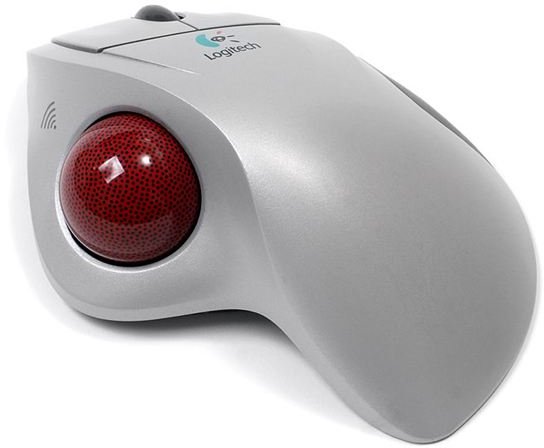What is a Trackball? The Pros and Cons of Trackballs
The Early Days of Inputting
Before the touchpad interface found on most every laptop and notebook computer these days, there was an input device called a trackball. It was simply a ball that you rolled around to make the mouse move. Laptop computers moved away from trackballs years ago, but it wasn’t until just the past couple of years that other devices like the BlackBerry smartphone finally went with a touchpad type input. Nowadays, trackballs are sort of a rarity, though companies like Logitech and Kensington still make them.
What is a Trackball?
A trackball is an interface device that involves a large ball that sits on top of rollers or pins and detects movement. Whereas a mouse moves around on a surface, a trackball stays in one place while you move the ball around. This type of input was more popular many years ago, and is still used today by graphic designers and engineers for its precision.
Trackballs originally worked like an upside down ball mouse where it had two rollers inside that detected up/down and left/right movement in order to pick up the range of motion. Modern trackballs now use optical sensors for more precise movement detection and to help keep from getting dirty like the way old mouse roller wheels would pick up junk and interfere with operation.
(Image credit: Wikimedia Commons)
Trackball Pros and Cons
The biggest benefit to using a trackball is the precision it offers. Sure, a good optical mouse is just fine for working in spreadsheets and Photoshop editing, but a trained professional with a trackball can get a lot done thanks to its ease of use and comfort. The trackball stays in one place while being used, so it can help save space on your desktop and also makes for easy access in environments where you might need to wear gloves or when a standard mouse just won’t work because it doesn’t have enough surface area to operate. Trackballs are great to connect to KVM switches in server rooms, for example.
The main downside to a trackball is the learning curve associated with them. They do take some getting used to before you can really make the best work with them. If more than one person uses your PC then you may have to deal with complaints from people who’d rather have a mouse. You could always get one of each. Unfortunately, a trackball is not great for gaming unless you’ve taken the time to condition yourself to playing with one. Most gamers don’t have that kind of patience, though I’ve read that the benefits can be phenomenal.
Trackballs Today
Microsoft got out of the trackball business a few years ago, and right now only three companies are still making them – Logitech, Kensington, and A4Tech. A fellow Bright Hub contributor has written up a review of Kensington’s trackball selection if you want more information on them. If you want to know more about why the trackball is headed to obsolescence, be sure to read this article on where all the trackballs have gone.
References
Author’s own experience
WikiPedia - https://en.wikipedia.org/wiki/Trackball
Logitech.com
Kensington.com
